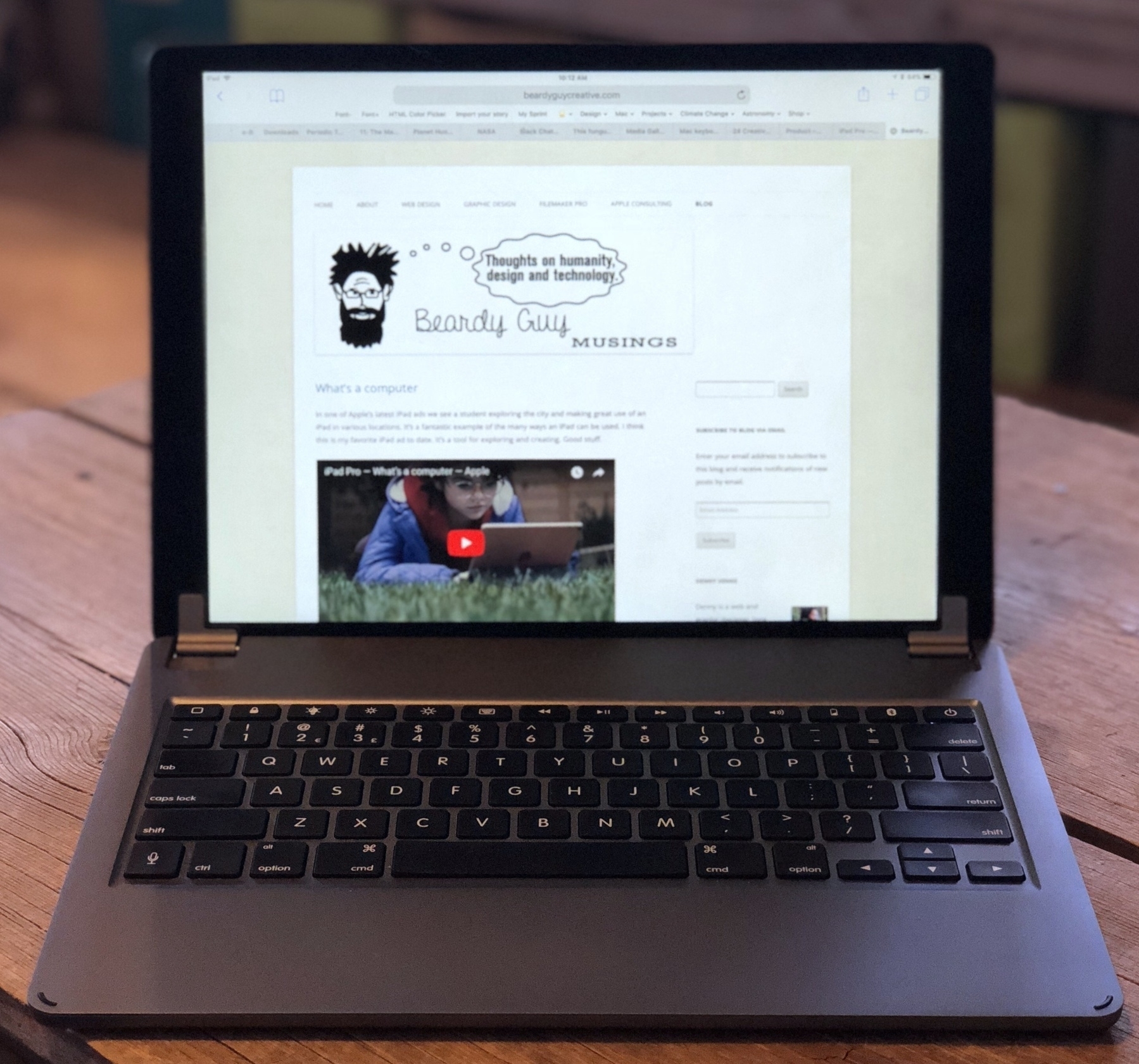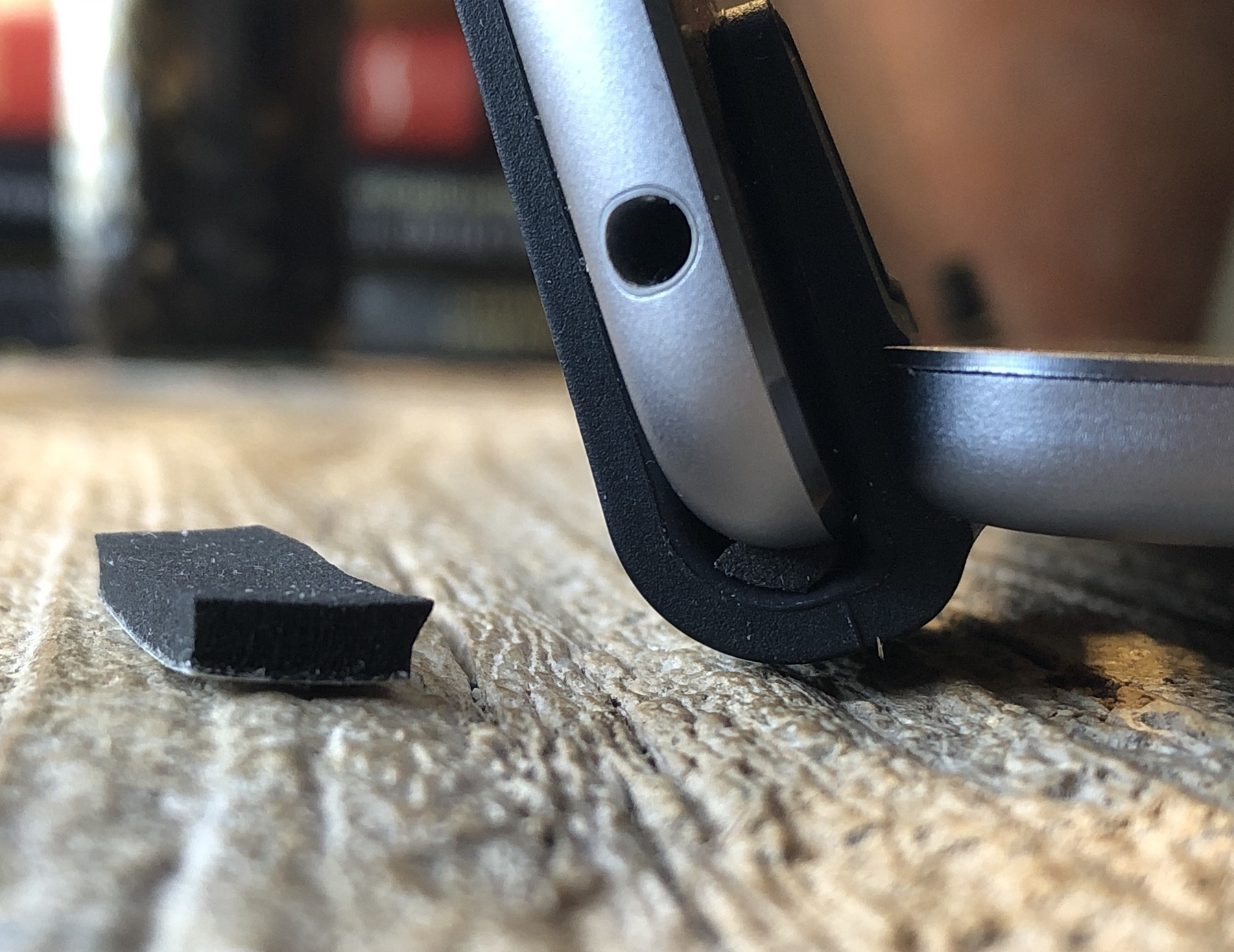The iPad Laptop

That said, as much as I’ve enjoyed using the Smart Keyboard I’ve got to admit I’ve been longing for Apple to make a keyboard like the Brydge. Others have written about the Brydge which is often described as very similar to an Apple laptop keyboard. Most recently Jason Snell wrote an excellent piece on Why Apple’s next laptop should run iOS. He’d previously written a review of the Brydge and mentions it again:
The problem with the iPad Pro is that it’s literally not a laptop: You can’t comfortably set it in your lap and get work done. (Yes, you can kind of balance the Smart Keyboard on your lap, but it’s not the same as using a laptop—in terms of stability or adjustability.) This year I’ve been using my iPad Pro with the Brydge keyboard, a Bluetooth keyboard with two clamps that turn the iPad Pro into something that looks an awful lot like a laptop—albeit one with no trackpad.Seeing his mention of it and the accompanying photo sent me off to have another look. The only reason I’d previously held off were the many reports of hit and miss quality. Lots of folks report getting units that had to be replaced, often more than once. Yikes. By chance I happened to look around Thanksgiving and they were running a Black Friday sale so I finally bought it and have been using it for about a week.
The Brydge arrived in perfect condition. It is, as reported by many, very similar to typing on the keyboard of a current generation MacBook Air or the previous generation of MacBook Pro. Which is to say, it’s excellent. It is very nearly the perfect iPad keyboard. I can slide the iPad into the hinge connectors easily but not too easily. They grip it well so it feels secure. I really only have two complaints.
The top, outer edge of this keyboard is very sharp. It almost feels like a knife blade. Second, the iPad rests deep enough in the hinges that the bottom edge of the screen is just level with the back of the keyboard which means using my fingers to pull-up to activate the dock and multitasking of iOS 11 is very difficult and often results in misses. Very frustrating. If I put the iPad into the hinge brackets but don’t push it all the way down it still sits above the back of the unit and activating the dock is easy. If it just sat 1-2 millimeters higher, access to the dock and multitasking would be much better.

If the design were tweaked these are issues that could be fixed without too much difficulty and they really should be.
Back to Jason Snell who posted a follow-up article on the idea of an iOS laptop, this time addressing the critiques of his initial article. In the follow-up, The case against building an iOS laptop—and why it might happen anyway, he writes:
I use my iPad with external keyboards all the time. Sometimes it’s clipped into a keyboard case, so it’s shaped exactly like a laptop. Sometimes it’s on a table with a Smart Keyboard attached. Other times, it’s in a stand on a table with a USB keyboard attached via Apple’s USB 3-Lightning adapter...I’ve been using mine like this too. My only disagreement is that I think the current iPad is the iPad Jason is describing. I don’t think Apple needs to do much aside from build a proper keyboard. Just tweak the current Brydge a bit and give it the usual Apple fit and finish. Perhaps fix the orientation of the Apple logo on the back of the iPad to reflect a primary horizontal orientation. If Apple could create a hinge with the Smart Connector and a magnetic lock-in we would have the tablet/laptop combination.If I were doing something that didn’t require typing, something that involved intense tapping and swiping on my iPad, the Zombie Arms experience would start to come to the fore. On the iPad, that’s when I would disconnect the keyboard and hold the tablet more naturally. (That’s why I think an iOS laptop would ideally be a convertible laptop, so you could fold back the keyboard entirely when it isn’t needed.)
As is I think the Brydge does this right now though it is bluetooth based whereas an Apple solution would use the Smart Connector. I’ve only had a week with the Brydge but this combination feels nearly perfect. It’s a laptop when I want a laptop, a tablet when I want a tablet. The effort required to switch form factors is simply to lift the iPad from the hinges or to place in back in them.